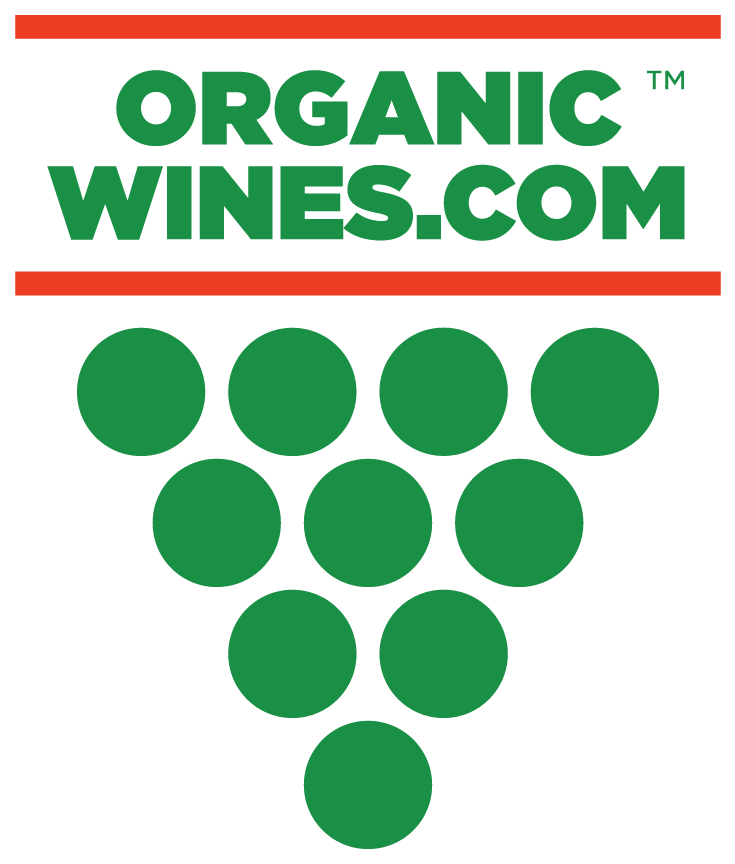
When you think of organic wine, you likely imagine a pure, chemical-free drink that’s as natural as it gets. But if you’ve ever wondered whether organic wine contains sulfites, you’re not alone. Sulfites, commonly used as preservatives in winemaking, have sparked plenty of debate among wine enthusiasts and health-conscious drinkers.
You might assume organic wine is completely free of sulfites, but the truth isn’t so straightforward. Understanding what goes into your wine and how organic labeling works can help you make informed choices. Whether you’re concerned about allergies, additives, or simply curious, it’s worth exploring what sets organic wine apart and how sulfites fit into the picture.
What Is Organic Wine?
Organic wine is made from organically grown grapes without synthetic pesticides, herbicides, or fertilizers. It follows strict production standards that promote sustainability and environmental health.
Defining Organic Wine
Organic wine must meet certified organic farming and production standards, which vary by region. In the US, organic wine produced under USDA regulations excludes GMOs and prohibits synthetic additives. While some organic wines contain naturally occurring sulfites, added sulfites are limited to lower levels compared to conventional wine.
How Organic Wine Differs From Conventional Wine
Organic wine differs from conventional wine in farming practices and permissible additives. Organic vineyards use natural pest control and composting instead of chemical sprays, preserving soil and biodiversity. Winemaking prohibits artificial colorings, flavorings, and many preservatives in certified organic wine, ensuring minimal chemical intervention. As low-intervention wines, they are defined by lower sulfite content and environmentally responsible methods that distinguish organic wine from conventional options.
What Are Sulfites?
Sulfites are sulfur-based compounds that naturally occur in some foods and beverages, including wine. They're also added during production for their preservative properties.
Understanding Sulfites
Sulfites primarily refer to sulfur dioxide (SO2) and related compounds. They're found in a variety of products like dried fruits, canned goods, and wine, either occurring naturally or through intentional addition. In winemaking, sulfites are a natural byproduct of fermentation due to yeast activity.
The Food and Drug Administration (FDA) classifies sulfites as "generally recognized as safe" (GRAS) for consumption. However, some individuals, particularly those with asthma or sulfite sensitivity, may experience allergic-like reactions to these compounds.
Why Sulfites Are Used in Winemaking
Producers utilize sulfites to enhance wine preservation. These compounds help prevent spoilage by inhibiting the growth of bacteria and unwanted yeast. Additionally, sulfites preserve the wine’s flavor, color, and aroma during storage and transportation. Wines made without sulfite additions are more prone to oxidation and microbiological instability, which can compromise quality over time.
Organic wine typically contains lower levels of added sulfites than conventional wine, aligning with strict production standards.
Does Organic Wine Contain Sulfites?
Organic wine contains sulfites, but in lower quantities compared to conventional wine. These compounds can occur naturally during fermentation or be added for preservation.
The Truth About Sulfites in Organic Wine
Sulfites are naturally present in all wines as a byproduct of fermentation. Organic wine may include additional sulfites to extend shelf life and prevent oxidation but follows strict limits on the amount added. In the US, organic certification requires minimal use of sulfites, distinguishing it from conventional wines, where higher levels are common. Despite misconceptions, "organic" doesn't mean "sulfite-free."
Regulations for Sulfites in Organic Wine
Regulations for sulfites in organic wine vary by region. In the US, organic wine certified by the USDA cannot contain more than 10 parts per million (ppm) of added sulfites, and total sulfites must not exceed 100 ppm. Imported organic wines may differ; countries like the EU permit up to 150 ppm for organic labels. Always check labels for compliance with local or international standards.
Comparing Sulfite Levels: Organic vs. Conventional Wine
Organic wine generally contains fewer sulfites than conventional wine. Typical sulfite levels are as follows:
Organic wines typically contain up to 100 ppm (parts per million) of sulfites under U.S. standards, whereas conventional wines can range from 150 to 350 ppm, depending on the type.
Conventional wine often relies on higher sulfite levels for stability, whereas organic wine prioritizes natural preservation methods. Choosing organic lowers your exposure to synthetic preservatives and aligns with sustainable winemaking practices.
Benefits Of Drinking Organic Wine With Low Sulfites
Organic wine with low sulfites offers distinct advantages for health and the environment. These benefits arise from its natural production processes and reduced reliance on chemical additives.
Potential Health Benefits
Consuming organic wine with low sulfites may reduce the likelihood of sulfite-related sensitivities. High sulfite levels in conventional wine can cause headaches, skin irritation, or respiratory issues in sensitive individuals. Organic wines' strict sulfite limits ensure lower exposure, making it a preferred option for those with mild intolerances.
Low sulfite content preserves more natural antioxidants like resveratrol, which supports heart health. Excessive sulfites can degrade antioxidant levels, but organic wine retains these compounds better, offering added nutritional value. Its lower chemical exposure also makes it a cleaner choice, reducing the risk of ingesting synthetic preservatives or pesticide residues.
Environmental Advantages
Organic winemaking supports sustainable farming practices that protect ecosystems. By avoiding synthetic pesticides and fertilizers, organic vineyards ensure soil health, conserve water resources, and promote biodiversity. This eco-friendly approach reduces pollution and fosters a healthier environment.
The limited use of sulfites contributes to sustainability by minimizing chemical inputs during production. Organic wines align with renewable practices and environmentally responsible farming. Choosing organic options helps support these efforts, encouraging more sustainable agricultural methods and reducing the overall environmental impact of wine production.
How To Identify Sulfite Levels In Organic Wine
Understanding how to identify sulfite levels in organic wine helps you make informed decisions about what you're drinking. Focus on reading wine labels and knowing key selection tips to find options with minimal sulfites.
Reading Wine Labels
Wine labels provide essential information about sulfite levels. Certified organic wines in the US must state "No Added Sulfites" if they don’t contain added sulfur dioxide. If sulfites are present, labels must include a disclaimer like "Contains Sulfites," required by the FDA for wines with sulfite levels exceeding 10 parts per million (ppm). Some labels specify the total sulfite content, offering clarity for those with sensitivities.
Pay attention to organic certifications, such as USDA Organic or similar designations in Europe and other regions, as they indicate compliance with strict limits on added sulfites. European organic wine labels may state "Organic Wine with Sulfites," reflecting slightly relaxed thresholds compared to US regulations.
Tips for Choosing Low-Sulfite Wines
-
Select Certified Organic Wines: Choose wines labeled "USDA Organic" or "Certified Organic" to ensure lower sulfite content, typically capped at 100 ppm.
-
Consider "No Added Sulfites" Options: Look for wines explicitly marked "No Added Sulfites" to avoid additional sulfite preservatives, although natural sulfites may still be present.
-
Opt for European Organic Wines: While European organic standards permit added sulfites, they limit total levels, generally offering lower sulfite content compared to conventional wines.
-
Research Natural Wines: Natural wines, often made without added sulfites, can appeal to those seeking minimal sulfite exposure, though availability may vary.
-
Purchase from Specialty Retailers: Specialty wine shops or online platforms typically offer detailed product descriptions, helping you easily identify wines with reduced sulfite levels.
At Organic Wines, we make it easy to shop confidently for wines with lower sulfite content. Our collection includes certified organic wines, natural wines, low-sulfite wines, and low-intervention selections from trusted vineyards across Europe and the U.S.
Whether you’re looking for a clean red wine, a crisp white wine, or a refreshing sparkling wine, each bottle is carefully chosen to align with our commitment to transparency, sustainability, and minimal additives, so you can enjoy every sip with peace of mind.
Key Takeaways
-
Organic wine contains sulfites, but in lower quantities compared to conventional wine, as they occur naturally during fermentation or are added minimally for preservation.
-
Regulations for sulfite levels in organic wine are stricter, with US standards allowing no more than 100 ppm of total sulfites, while conventional wines can contain 150–350 ppm.
-
Organic winemaking focuses on sustainable practices, avoiding synthetic pesticides and fertilizers, and promoting biodiversity and environmental health.
-
Drinking organic wine with low sulfites may benefit individuals with sulfite sensitivities, preserving natural antioxidants and offering a cleaner, less chemically processed choice.
-
To identify low-sulfite organic wines, look for certified organic labels, "No Added Sulfites" markings, and specific labeling information regarding total sulfite content.
Conclusion
Understanding the role of sulfites in organic wine helps you make more informed choices that align with your preferences and lifestyle. While organic wine isn’t completely sulfite-free, its lower sulfite levels and sustainable production methods make it a cleaner, eco-friendly option. Wines from Organic Wines are carefully selected to meet these standards. By paying attention to labels and certifications, you can confidently select wines that suit your needs and support environmentally responsible practices.
Order top-quality organic wine from Organic Wines today and explore a cleaner, more conscious way to enjoy your favorite wines.
Frequently Asked Questions
What is organic wine?
Organic wine is made from grapes grown without synthetic pesticides, herbicides, or fertilizers. It follows certified organic farming standards, promotes sustainability, and limits chemical intervention. Organic wine also excludes GMOs and contains lower levels of added sulfites compared to conventional wine.
Does organic wine contain sulfites?
Yes, organic wine contains sulfites, but in lower amounts than conventional wine. While sulfites occur naturally during fermentation, certified organic wine in the US must limit added sulfites to no more than 10 ppm, adhering to strict regulations.
Are sulfites in organic wine harmful?
For most people, sulfites in organic wine are not harmful. They are recognized as safe by the FDA, but some individuals may have sensitivities. Organic wine reduces exposure to higher levels of sulfites, offering a better choice for those concerned.
How can I identify sulfite levels in organic wine?
Check the wine label for certifications and disclaimers. In the US, "No Added Sulfites" indicates no sulfites were added. Wines with added sulfites must disclose this information. European organic wines often have similarly transparent labeling.
What are the benefits of drinking organic wine?
Organic wine promotes sustainability, reduces exposure to synthetic chemicals, and typically contains fewer sulfites. It may also retain more natural antioxidants, such as resveratrol, which supports heart health, making it a cleaner and eco-friendly choice.
How do sulfite levels compare between organic and conventional wine?
Organic wines have stricter sulfite limits, capped at 10 ppm for added sulfites and 100 ppm total in the US. In contrast, conventional wines can have sulfite levels ranging from 150 to 350 ppm.
Are all wines with "organic" labels sulfite-free?
No, wines labeled "organic" may still contain sulfites. If a wine is sulfite-free, it will have a "No Added Sulfites" or similar disclaimer. Always read the label carefully for accurate information.
Why are sulfites added to wine?
Sulfites are added to wine as preservatives. They help prevent spoilage, maintain flavor, color, and aroma, and extend shelf life. Even organic wines may include minimal added sulfites for these reasons while adhering to strict limits.
How do I choose organic wine with low sulfites?
Look for wines labeled "Certified Organic" or "No Added Sulfites." Check for organic certifications in Europe or the US, and consider buying from specialty retailers that provide detailed product information.
Is organic wine better for the environment?
Yes, organic wine supports sustainable farming practices, avoids synthetic chemicals, conserves water, fosters biodiversity, and reduces the overall environmental impact of wine production, making it an eco-friendly choice.
